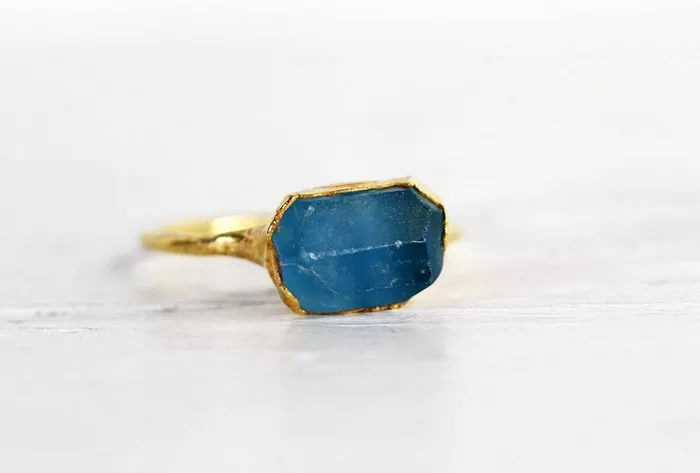Jewelry appraisal is a complex and fascinating field that involves a deep understanding of gemstones, metals, craftsmanship, and historical significance. Among the various types of jewelry, Czech meteorites and black tourmaline necklaces occupy a unique position due to their intriguing origins and properties. This article aims to provide a detailed introduction to the collection value of these two types of jewelry, using simple sentences and logical reasoning.
Czech Meteorites: Cosmic Relics with High Collection Value
Meteorites are fragments of celestial bodies that have fallen to Earth. Czech meteorites, specifically, refer to those meteorites that have been found in the Czech Republic or have been processed and polished there. These meteorites carry a unique charm and mystery, making them highly sought-after by collectors and enthusiasts.
Origin and Types
Czech meteorites are primarily stony meteorites, composed mainly of silicate minerals. They are believed to have originated from asteroids or the surfaces of other planets, and have undergone significant changes during their journey through space and upon impact with Earth. Some Czech meteorites are even known to contain rare minerals and elements that are not commonly found on Earth.
Scientific Significance
From a scientific perspective, Czech meteorites provide valuable insights into the formation and evolution of the solar system. They can be studied to understand the composition and structure of other celestial bodies, as well as the conditions under which they formed. This scientific significance adds to their appeal for collectors who are also interested in astronomy and geology.
Aesthetic Appeal
In addition to their scientific value, Czech meteorites are also highly valued for their aesthetic appeal. Their unique textures, colors, and shapes make them ideal for jewelry making. When polished and set in metal, Czech meteorites can create stunning pieces of jewelry that are both visually appealing and meaningful.
Collection Value
The collection value of Czech meteorites is determined by several factors, including their rarity, size, quality, and historical significance. Some meteorites are more rare than others, and larger pieces are generally more valuable. The quality of the meteorite, in terms of its composition and appearance, also plays a crucial role in determining its value. Furthermore, meteorites that have been associated with significant historical events or discoveries may fetch even higher prices.
Collectors of Czech meteorites often seek out pieces that have been authenticated and certified by reputable institutions. This ensures that the meteorite is genuine and not a fake or altered version. Certified meteorites typically come with detailed documentation about their origin, composition, and history, which adds to their collection value.
Black Tourmaline Necklaces: Healing Crystals with Unique Charm
Black tourmaline is a semi-precious gemstone that has been used in jewelry making for centuries. Its dark, shiny appearance and alleged healing properties make it a popular choice for necklaces and other jewelry items.
Properties and Benefits
Black tourmaline is known for its protective and grounding properties. It is believed to shield the wearer from negative energy and promote a sense of calm and balance. Many people wear black tourmaline necklaces as a way to enhance their overall well-being and promote positive energy.
In addition to its healing properties, black tourmaline is also valued for its durability and hardness. It is a relatively scratch-resistant gemstone, making it suitable for everyday wear. Its dark color also makes it a versatile choice for pairing with other gemstones or metals.
Jewelry Design
Black tourmaline necklaces can be designed in a variety of styles to cater to different tastes and preferences. Some necklaces feature single large pieces of black tourmaline, while others may incorporate multiple smaller stones. The metal used in the setting can also vary, with options such as silver, gold, and rose gold being popular choices.
Designers often use black tourmaline in combination with other gemstones to create visually striking pieces. For example, pairing black tourmaline with white diamonds or light-colored gemstones can create a striking contrast that draws attention to the necklace.
Collection Value
The collection value of black tourmaline necklaces is influenced by several factors, including the quality of the gemstones, the craftsmanship of the jewelry, and its design. High-quality black tourmaline pieces that are well-cut and polished will typically fetch higher prices. Similarly, necklaces that are made with attention to detail and use high-quality metals will be more valuable.
Design also plays a significant role in determining the collection value of black tourmaline necklaces. Unique or custom designs that stand out from the crowd are often more sought-after by collectors. Pieces that incorporate other elements, such as charms or pendants, can also add to their appeal.
Market Trends
The popularity of black tourmaline necklaces has been growing in recent years, driven by increasing interest in healing crystals and alternative wellness practices. As a result, there has been a surge in the number of jewelry designers and manufacturers offering black tourmaline necklaces in a variety of styles and price points.
Collectors who are interested in black tourmaline necklaces should be aware of these market trends and keep an eye out for new and innovative designs. While some pieces may be more affordable, others may fetch high prices due to their rarity or uniqueness.
Conclusion
In conclusion, Czech meteorites and black tourmaline necklaces both offer unique collection value for jewelry enthusiasts. Czech meteorites, with their cosmic origins and scientific significance, provide a fascinating glimpse into the mysteries of the universe. Their rareness and aesthetic appeal make them highly sought-after by collectors.
Related topic:
- Is Tourmaline Found in China?
- Pink Tourmaline or Rose Quartz: Which is Better for Everyday Wear?
- Pink Tourmaline and Diamond: Understanding the Difference in Hardness


